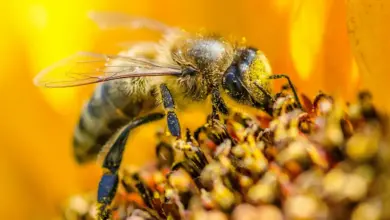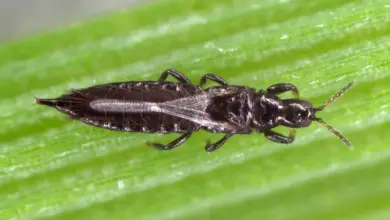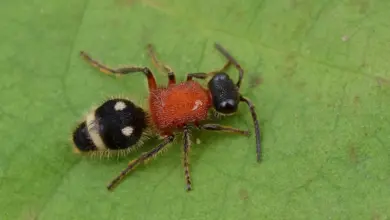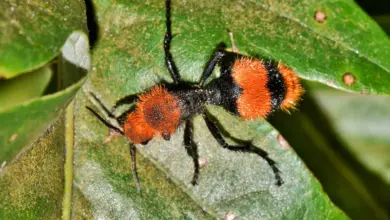When discussing decomposers in the ecosystem, termites undoubtedly come to mind. Playing a significant role in breaking down organic matter, termites help recycle nutrients back into the soil. You may be curious to learn if termites can be classified as decomposers and how they contribute to the ecosystem.
Termites are indeed part of the decomposition process, taking part in the breakdown of dead plant materials like wood and leaf litter. Their digestive systems contain microorganisms that enable them to digest cellulose, the primary component of plant cell walls. As termites consume wood or other plant materials, the cellulose is broken down, and the nutrients are released back into the environment.
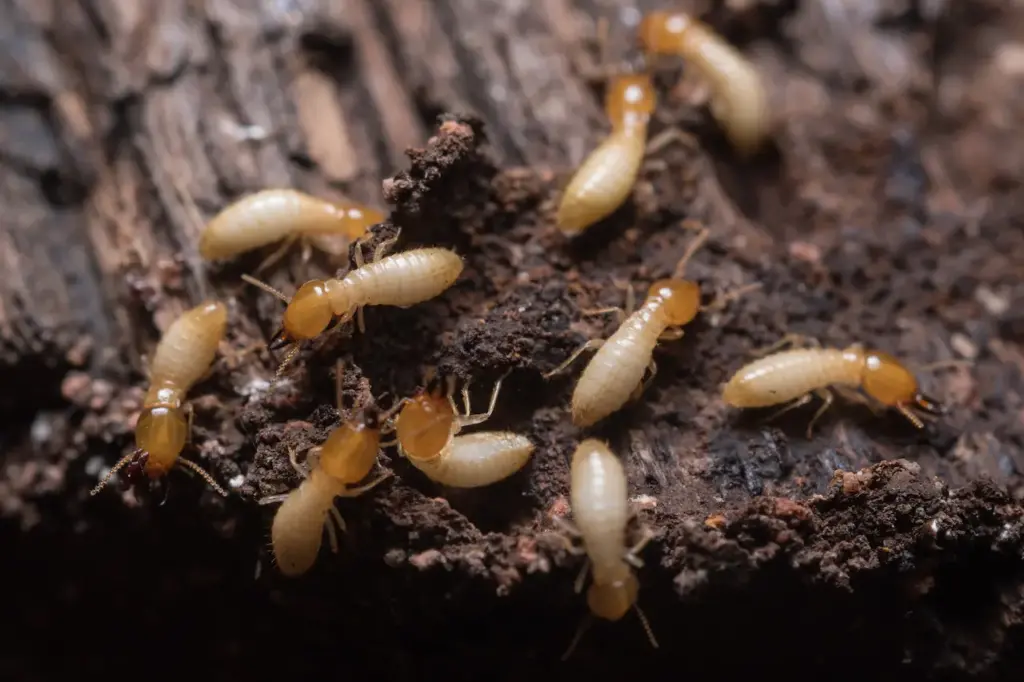
Termite Ecosystems
In various ecosystems, especially tropical and subtropical regions, termites play a vital role in maintaining the balance of nutrients and organic matter. However, it’s essential to remember that termites can also cause significant damage to structures and properties, making their presence unwelcome in human habitats. Despite the negative impacts, their role as decomposers is undeniable and crucial for the health of our ecosystems.
Termites as Decomposers
Termites are amazing decomposers that contribute significantly to breaking down deadwood in tropical ecosystems. In fact, termites can decompose more than half of deadwood in certain tropical environments.
They play a crucial role in breaking down complex organic matter, like cellulose found in wood, into simpler substances that can be used by other organisms in the ecosystem. By doing this, they help recycle nutrients and support the overall health of their habitat.
A fascinating aspect of termites as decomposers is their ability to form galleries in the wood. These galleries extend up to the wood’s surface, leaving only a thin layer intact, as mentioned by the Home & Garden Information Center. Termites create small, temporary openings called “kick-out” holes, from which they push out their fecal material. This process helps them maintain clean galleries while contributing to the decomposition process.
To sum it up, termites play a vital role as decomposers in various ecosystems. They help break down complex materials like wood, which ultimately benefits the environment and other organisms living in it. Their unique galleries and their capability to process large amounts of deadwood make them an essential component in maintaining a healthy ecosystem.
The Role of Termites in Ecosystems
Termites play a crucial part in ecosystems, particularly in tropical environments, where they contribute to the recycling process of dead wood from trees. Imagine a world where plants and animals pile up due to a lack of decomposers; that’s where termites come in.
- Key decomposers in forests
- Recyclers of nutrients from dead wood
As the climate warms, termites could extend their habitats towards the North and South poles. These tiny insects may have a more significant role in maintaining forest health across various geographical locations in the future.
When it comes to nutrient cycling, termites are experts. The breakdown of wood into nutrients ensures that the soil remains rich and fertile, essentially giving life back to the environment.
- Essential role in nutrient cycling
- Keeps soil fertile and healthy
As a friendly reminder, it’s essential to consider the role of termites in ecosystems and their impact on forest health. Keep an eye on how climate change affects their distribution and their part in maintaining nature’s balance.
Decomposition Process
Termites are crucial decomposers in ecosystems, as they help break down wood and other organic matter. Their digestive tracts contain microorganisms like bacteria and protozoa which enable them to convert cellulose in wood into usable food source. In the decomposition process, these organisms work together alongside termites.
In this process, enzymes play a vital role. Termites produce enzymes that help break down the complex cellulose structure, making it more accessible for bacteria and protozoa. These microorganisms then help in converting the degraded substances into simpler forms, which termites absorb as nutrients.
For example, consider a piece of damp wood infested by termites. Termites, along with the microorganisms in their digestive tracts, aid in breaking down the cellulose into simpler substances.
Comparing termites to other decomposers:
| Organism | Role in Decomposition | Examples |
|---|---|---|
| Termites | Break down wood and other cellulose materials | Subterranean and dampwood termites. |
| Bacteria | Decompose organic matter at a cellular level | Aerobic and anaerobic bacteria. |
| Protozoa | Consume bacteria and other microscopic organisms | Amoebae, ciliates, and flagellates. |
| Enzymes | Aid in breaking down complex organic structures | Cellulases and ligninases produced by termites, bacteria, and fungi. |
To sum up:
- Termites and microorganisms in their digestive systems, including bacteria and protozoa, collaborate to break down complex organic material.
- Termites produce enzymes that assist in the decomposition process, making it easier for bacteria and protozoa to convert cellulose into simpler substances.
- Termites play a crucial role in wood decomposition, contributing to the natural recycling of organic matter in ecosystems.
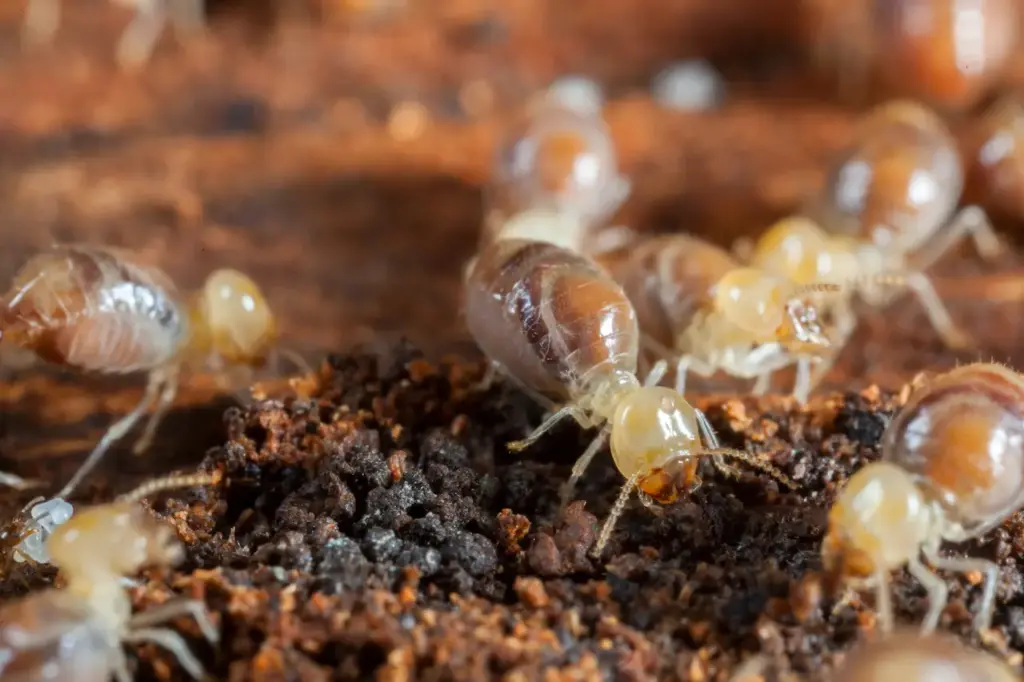
Nutrient Recycling
Termites play a significant role in nutrient recycling, especially when it comes to breaking down wood and returning nutrients to the soil. As decomposers, they help maintain the balance of nutrients like carbon, nitrogen, phosphorus, and calcium, all of which are essential for plant growth and overall ecosystem health.
When termites consume wood, they break down the cellulose and lignin, releasing stored nutrients back into the environment. This process not only benefits soil fertility but also aids in the cycling of carbon, which is a vital component of the global carbon cycle.
However, your input shouldn’t be limited to just understanding their role in the ecosystem. You may need to protect your property from termite infestations, as they can cause significant structural damage. An effective method to control termites is through prevention measures and appropriate use of termite treatments.
Termites also contribute to nitrogen cycling. They host symbiotic bacteria in their gut which can fix nitrogen, turning it into a usable form for plants. This further enriches the soil and promotes plant growth.
Additionally, phosphorus and calcium are also cycled through the decomposition of wood by termites. These elements are crucial for plant development and soil structure. By facilitating their cycling, termites help maintain a balanced ecosystem.
In summary, termites are vital decomposers in many ecosystems, playing a pivotal role in nutrient recycling by breaking down wood and contributing to the cycling of elements such as carbon, nitrogen, phosphorus, and calcium. By understanding their role and implementing proper control measures, you can balance their benefits and potential harms.
Termites and Wood
Termites play a significant role in the decomposition of wood. They digest wood and turn it into usable food with the help of microorganisms in their digestive tracts. Termites are essential for breaking down dead wood and maintaining the balance of ecosystems.
Some termites, such as subterranean termites, rely on moisture from the soil for their survival. These termites often infest fallen trees, stumps, or other dead wood in contact with the soil. Wooden structures in our homes can also become infested with these termites, causing significant damage if left unchecked.
Other termite species, like dampwood termites, thrive in wet wood instead of soil. This makes them common residents in forested areas with high rainfall and humidity. Protecting your wooden structures from excess moisture can help prevent dampwood termite infestations.
Here are some tips to help safeguard your wooden structures:
- Regularly inspect for termite activity
- Treat any moisture problems, such as leaks or poor ventilation
- Keep wood and cellulose materials away from your home
- Avoid using mulch near the foundation of your house
- Schedule regular professional termite inspections
By paying attention to these precautions, you can help protect your wooden structures from termite damage and maintain the integrity of your property.
How Termites Decompose Plant Materials
Termites are fascinating creatures that play a significant role in decomposing plant materials. In this section, you will learn about the process through which termites break down plant materials like leaves and wood.
Termites feed on cellulose, the primary component of plant fibers. Their digestive systems contain special microorganisms that help in breaking down these complex plant materials. As a result, they can efficiently decompose more than half of deadwood in tropical areas.
As you may know, plant materials come in various forms such as leaves, wood, and litter. Termites, as essential decomposers, can chew through all these types of plant materials. For example, you might have encountered termites consuming fallen leaves or making their way through wooden structures.
Here’s a brief comparison table indicating the aspects of plant materials termites decompose:
| Plant Materials | Termites activity |
|---|---|
| Wood | Primary food source |
| Leaves | Consumed when available |
| Litter | A secondary food source |
Some key features of termites and their role in decomposing plant materials are:
- Efficient in breaking down cellulose
- Contribute to nutrient cycling in ecosystems
- Help prevent a build-up of dead plant materials
- Can adapt to various environmental conditions
Keep in mind that termites, while essential to decomposing plant materials, can also cause structural damage when they infest homes and buildings. However, their role in natural ecosystems is vastly beneficial, especially in tropical regions, where they help maintain a balance by breaking down dead plants and returning nutrients to the soil.
Termites and Soil Health
Termites play a crucial role in maintaining soil health. As they decompose wood, they enrich the soil with nutrients and improve its structure. Let’s dive into how termites contribute to soil health.
Termites feed on wood or wood products and their feces contribute to the soil’s fertility. Their digestive tracts contain microorganisms that help convert cellulose in wood into usable food. This process results in the production of fecal pellets. For example, drywood termites push out fecal material through small, temporary openings, which later get resealed.
Here are some ways termites impact soil health:
- Enriching soil: Termite feces contain nutrients that get mixed into the soil, making it more fertile.
- Improving soil structure: Termites create tunnels while foraging for food, which increases the soil’s aeration and water-holding capacity.
- Promoting microbial activity: The feces of termites provide an energy source for other soil microorganisms, enhancing the soil’s overall health.
However, excessive termite activity can lead to structural damage in buildings. You can mitigate the risks by implementing termite-resistant construction materials and techniques.
In conclusion, termites are essential for maintaining soil health. By decomposing wood, they can not only enrich the soil with nutrients but also improve its structure and promote microbial activity. Still, it’s crucial to keep their populations in check to avoid potential damages to your property.
Other Organisms Involved in Decomposition
In addition to termites, several other organisms play a crucial role in the decomposition process. These include animals, insects, fungi, millipedes, earthworms, and cockroaches. Let’s explore their roles briefly.
Animals like rodents and scavengers help break down larger organic matter into smaller pieces. Their feeding activity makes it easier for other decomposers to access the nutrients.
Fungi, such as mushrooms, are well-known decomposers. They release enzymes that break down the tough plant material and transform it into simpler compounds.
As for insects, many of them, like beetles and flies, act as secondary decomposers. They feed on decaying matter and further break it down, allowing other organisms to continue the process.
Millipedes are proficient at breaking down dead leaves and plants. They mainly feed on decaying organic matter and, in return, provide nutrients for the soil.
Earthworms play a vital role in enhancing soil fertility. They consume dead plants and animals and create nutrient-rich waste, which benefits the soil.
Lastly, cockroaches are known for their ability to consume nearly anything. In nature, they help break down organic matter, thus assisting in the decomposition process.
To summarize, here’s a comparison table highlighting these organisms:
| Organism | Role in Decomposition |
|---|---|
| Animals | Break down larger organic matter |
| Insects | Act as secondary decomposers |
| Fungi | Release enzymes to break down plant material |
| Millipedes | Consume decaying leaves and plants |
| Earthworms | Enhance soil fertility through nutrient-rich waste |
| Cockroaches | Consume various organic matter, assisting in decomposition |
Understanding the roles of these organisms helps you appreciate their valuable contribution to maintaining the natural balance in ecosystems.
Termite Colonies and Their Roles
Termites play a vital role in the ecosystem, acting as decomposers that break down organic materials such as wood and cellulose. In this section, we will explore termite colonies and the roles of their various members.
Termite Colony Members:
- King and Queen: These are the primary reproductive members of a colony. They are responsible for producing all other termites in the colony. The queen has a long lifespan and can produce thousands of eggs throughout her life source.
- Workers: Worker termites are responsible for foraging food, caring for the young, maintaining the colony’s structure, and feeding other members of the colony. They are usually white in color and have soft bodies.
- Soldiers: Soldier termites are responsible for defending the colony from predators such as ants. They have larger heads and powerful jaws for defense.
- Alates: Alates are winged reproductive termites that leave the colony to start new colonies elsewhere. They are also known as swarmers.
Termite colony roles can be further summarized in the following table:
| Termite Member | Role |
|---|---|
| King & Queen | Reproduction |
| Workers | Foraging, nest maintenance, and caretaking |
| Soldiers | Colony defense |
| Alates | Forming new colonies |
Termite colonies are efficient and organized units that work together to ensure the survival of the entire colony. They maintain an interconnected network of tunnels, and it’s crucial for the colony to keep a moist environment source.
In conclusion, termite colonies are essential in the ecosystem, as they help in breaking down organic materials, thus enriching the soil. By understanding the roles of each termite member within a colony, you can appreciate the complex and efficient structure termites have developed to thrive in their environment.
The Impact of Termites on Climate Change
Termites play a significant role in ecosystems and climate change. They are essential decomposers, primarily in the tropics, where they break down wood and help recycle nutrients. As a result, termites influence the carbon cycle.
However, their impact on climate change is not only positive. Their decomposition process releases greenhouse gases like methane, which can increase with climate change. Thus, termites may contribute to climate change.
Here are a few key points to remember:
- Termites help maintain the balance in forest ecosystems.
- They support the carbon cycle through wood decomposition.
- Their activity produces greenhouse gases, potentially exacerbating climate change.
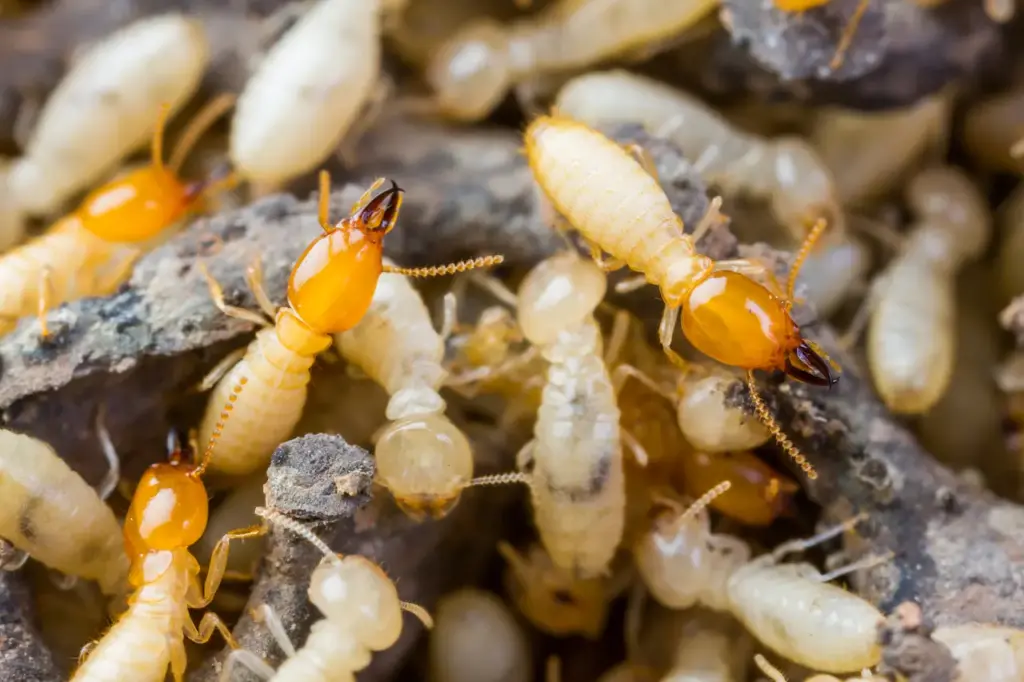
To sum it up, termites serve as important decomposers in ecosystems and have a complex relationship with the carbon cycle and climate change. While they aid in nutrient recycling, their increasing greenhouse gas emissions may contribute to climate change consequences.
The Role of Termites in Africa
In Africa, termites play a significant role in the ecosystem. They are well-known for their ability to decompose organic matter, such as wood and plant materials. By doing so, they help break down complex organic compounds into simpler ones, making nutrients available for other organisms in the soil.
One of the fascinating aspects of termites in Africa is their use as a food source for both humans and animals. In countries like Nigeria, termites are consumed due to their high fat and protein content. Some local people often capture termite swarms during their nuptial flights, as it’s the ideal time for harvesting these insects for consumption.
Apart from being a nutritious food source, termites also have cultural significance in sub-Saharan Africa. For instance, termite soil is often used as fertilizer and the act of eating soil (geophagy) is practiced by pregnant women throughout the continent. Additionally, termite mounds can serve as burial sites and are seen as sacred places, where the spirits of ancestors may reside.
Lastly, termite mounds have a unique architectural value, displaying impressive structures built in Africa. In countries like Nigeria, termite mounds are sometimes used to create mud-brick homes. This natural building material can help provide insulation from heat and humidity, promoting energy efficiency and sustainable construction methods.
To sum it up, the role of termites in Africa encompasses ecological, cultural, and practical dimensions. As decomposers, they contribute to soil fertility, while simultaneously serving as nutritious food and a valuable resource for various human activities.
Efforts in Termite Control
Termites are known for causing billions of dollars in structural damage every year, and homeowners spend a significant amount to treat and prevent these infestations. In this section, we’ll discuss various methods to control termites and protect your property.
Chemical Treatments: One of the most common methods is using soil termiticides, which are applied around and under the foundation of your home. These chemicals create a barrier that termites cannot cross, ensuring that your property remains safe. Some popular chemicals used include hexaflumuron and imidacloprid.
Physical Barriers: Another option in termite control is installing physical barriers, such as stainless steel mesh and particle barriers, at the time of construction. These barriers prevent termites from entering your property through cracks and gaps in the foundation.
- Pros of physical barriers:
- No chemical exposure
- Long-lasting protection
- Cons of physical barriers:
- Higher upfront cost
- Difficult to install in existing structures
Biological Control: Some homeowners opt for biological control methods like using beneficial nematodes or fungi that can attack and kill termites. While these methods are eco-friendly, their effectiveness varies and often requires regular monitoring.
As you look into termite control options, it’s essential to weigh the pros and cons of each method and consult with a professional to determine the best course of action for your specific situation. Remember, early detection and preventative measures are essential to avoid costly damages to your property. So, stay vigilant and protect your home from these unwelcome pests.
